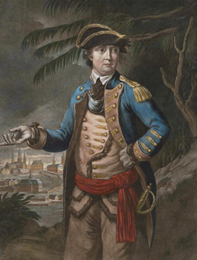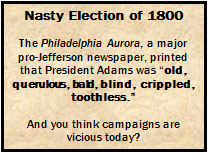
Source: Wikimedia, Benedict Arnold 1 color

Source: Wikimedia, Benedict Arnold 1 color
During the Battle of Saratoga, Continental General Benedict Arnold had been confined to quarters because of a personal dispute with General Horatio Gates. At a pivotal moment in the battle, he violated those orders and rode into the front lines. He rallied the troops and spurred the spectacular victory that became the turning point of the American Revolution. In the heat of the fighting, Arnold was critically wounded. As Arnold slowly recovered from the gunshot, Gates downplayed the role Arnold played in the fight and took almost all of the credit for the success.
If Arnold had died from his injuries, as was the more likely outcome in 1777, the skill and bravery he showed at Saratoga and prior battles would probably make him one of the most revered heroes of the American Revolution. You might very well be attending Benedict Arnold Middle School right now.
Instead, Arnold miraculously survived and grew so jealous of the credit Gates denied him that he chose to become one of the most infamous traitors in American history.
Context Matters
If someone made a movie of the life of Benedict Arnold, it would be a familiar story: a hero turns to the “dark side” because of a major character flaw. When following the historical figures through major events of the founding of America, you’ll find many other familiar events and plotlines.
 For example, the tale of the Declaration of Independence finds a classic mentor-mentee relationship with the young, brilliant Thomas Jefferson working with the older John Adams. By 1800, these two men will be bitter rivals competing in one of the nastiest presidential elections in U.S. history.
For example, the tale of the Declaration of Independence finds a classic mentor-mentee relationship with the young, brilliant Thomas Jefferson working with the older John Adams. By 1800, these two men will be bitter rivals competing in one of the nastiest presidential elections in U.S. history.
In this resource, you will follow four major historical figures, George Washington, Alexander Hamilton, Thomas Jefferson, and James Madison, through three critical periods of U.S. history: the decision to declare independence from England, the writing and ratification of the U.S. Constitution, and the implementation of the new government.
As you learn more about each of these figures and other major supporting people from the event, you will be asked to consider the roles they would be playing if a movie were made from each event. In fact, each of the following sections will start with a “trailer” for such a movie. The goal is to familiarize you more intimately with the people involved in the remarkable, “real life” tale of the founding of America.